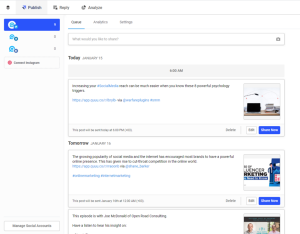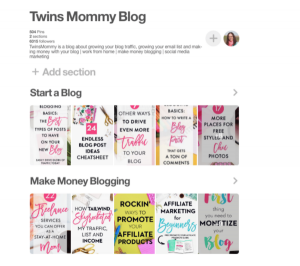
© Sergey Nivens – Fotolia.com
Earlier this year I created a new presentation called How to Write Your First Four Blog Posts. The basic premise is that you don’t need to write a new full-length article every time you post to your blog.
In fact, I suggest new business bloggers aim to write only ONE new article every month, and fill in the other three weeks with different types of posts that are easier and quicker to write – but that still provide value to your readers.
As I searched for examples of the four types of posts, I came across a delightfully simple post from the American Lighting Association that actually embodied elements of all four.
- Like a how to post, the information is broken down into a list. That means the reader knows what to expect, the writer could break her ideas into sections, and it’s spaced nicely on the page.
- Like a personal post, it highlights the author’s knowledge and insights. By honing in on one focused idea from each of the featured articles, she revealed more about her own personal style and approach to design.
- Like a curated post, the author didn’t create the content herself. Instead, she referenced and linked to existing articles already published online.
- Like a spotlight post, it featured a group of experts in a particular field. An association could easily use this opportunity to showcase its members, while any business can profile staff, vendors, customers, neighbours, or other influential members of your industry.
How to write your own combo post
Step One – Choose your links
You can build this type of post either from the bottom up or the top down. To build it from the bottom up, browse your favourite blogs, or the updates from your connections on social media. Look for interesting, high-quality articles your audience will find useful.
Even better, gather these links constantly through the month by saving them as soon as you read them. Email them to yourself, save them in a document or list, or try a tool like Pocket.
Step Two – Find your theme
Once you’ve settled on your list of links (I suggest 3 or 5 items), look for a connection between them. This becomes the theme of your post, and what you will use for your blog post title.
Or to build your post from the top down, find your theme first. Choose one of your blog categories and then go off in search of the best information that’s been shared in the past few weeks about that topic.
Look specifically for content from your customers, vendors or other partners, in order to spotlight their work and deepen your connection.
Or if there are specific people you want to build relationships with, share their work and then let them know you’ve done that. From this, new relationships and partnerships can grow.
Step Three – Add your voice
For each list item, create a heading that sums up the key point you took away from the content. Aim for each heading to be approximately the same length (for bonus points, be sure you’ve used parallelism).
Then write two or three sentences to describe the article and how it relates to the central theme of your post. Be sure to include your own personal view – what you most liked or appreciated about the ideas, and why you decided to include this particular link.
Step Four – Open and close
Once you’ve done the work to choose and summarize your links, add an introduction to summarize the overall theme of the post. Reiterate why the topic is relevant for your readers and what benefits they can expect after reading your post.
At the end of your post, suggest a follow-up action that will provide more value, such as: subscribe to your newsletter for more useful tips, read something else you’ve written about the topic, stay connected with you on social media to see other resources you share, or check out a related product or service you offer.
Digital & Social Articles on Business 2 Community(102)
Report Post







